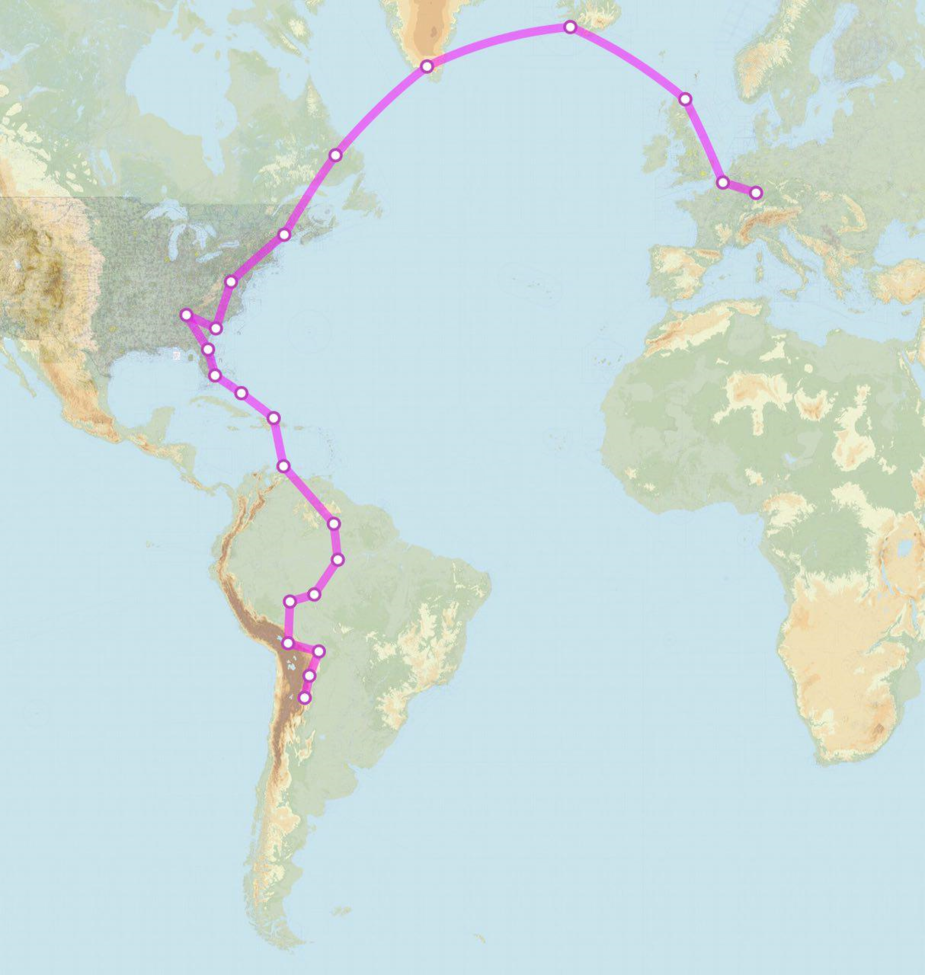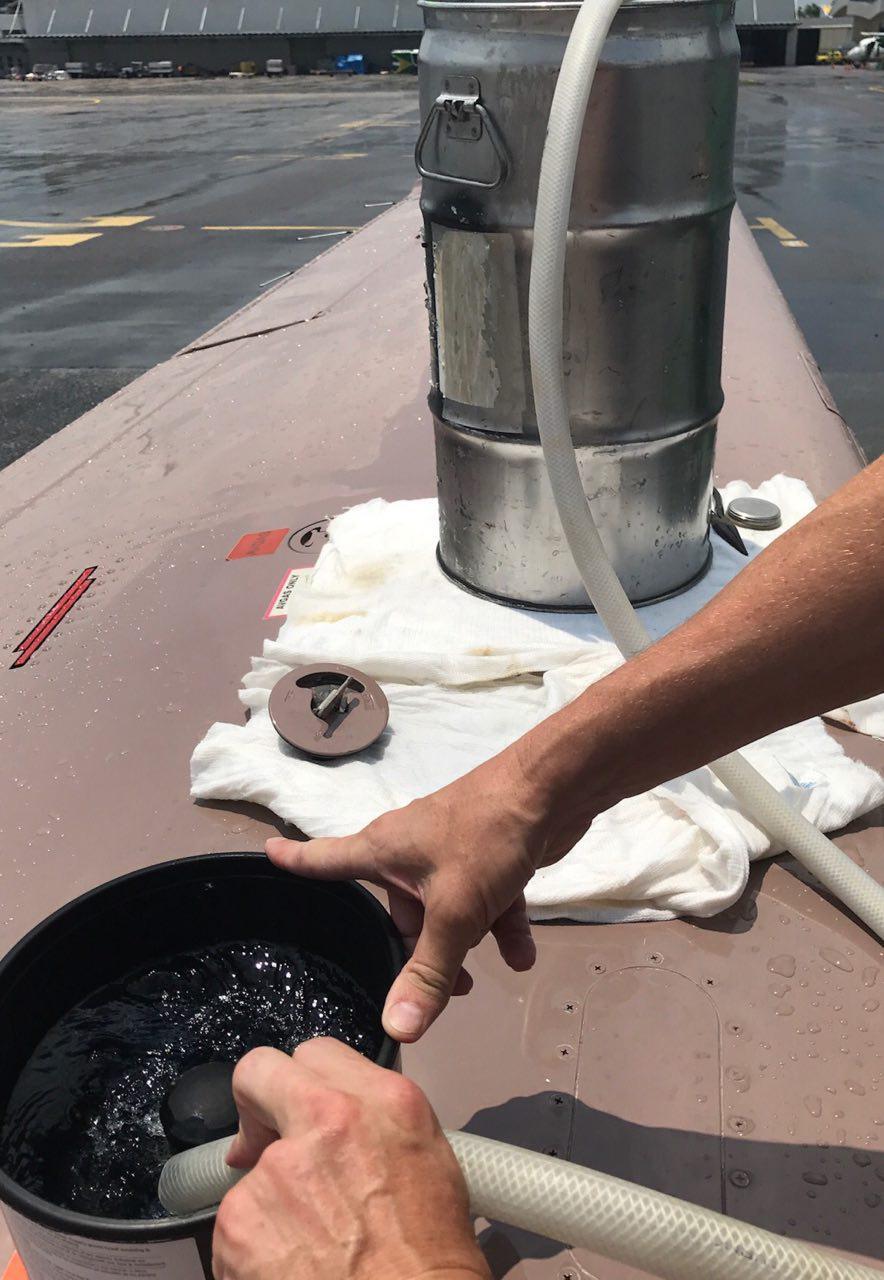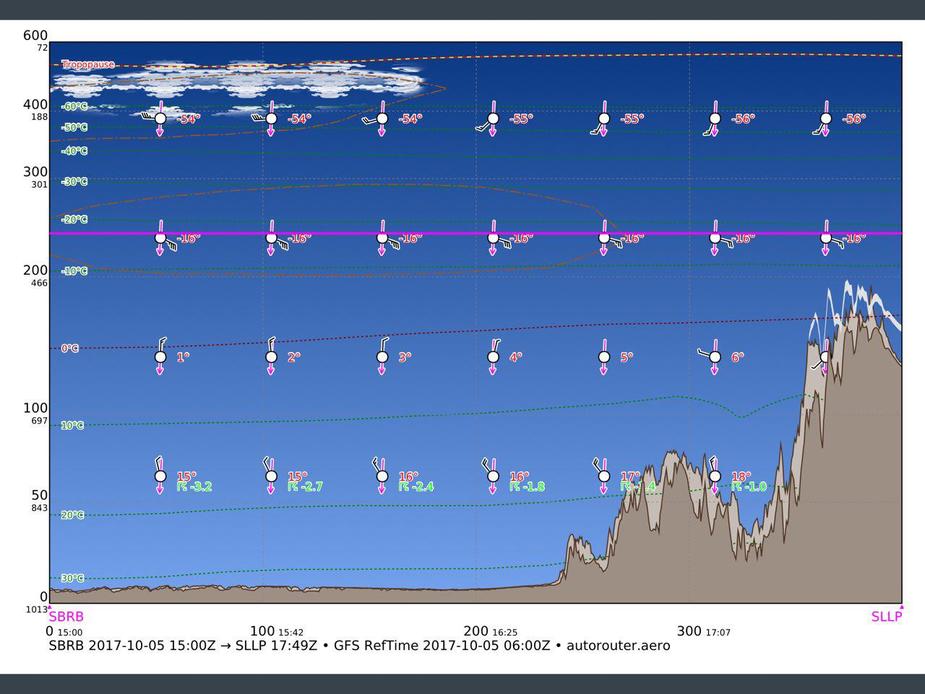Brazil and Bolivia proved to be difficult, each in its particular way. While we had to fight our lack of Portuguese language proficiency in Brazil, our main enemy in Bolivia was the altitude.

Our route to Argentina
Brazil
After celebrating with a few Caipirinhas and a day of rest, the first real destination in Brazil was Manaus (SBEG). On the afternoon of our rest day, we tried to get to our plane, what was surprisingly easy. We refueled, checked the oil and so on. The next morning was not as easy, as we simply didn’t know about the local procedures. You first have to pay the fees, then you show up at the ARO with the receipt and then you file a fpl. The offices are located at weird places, mostly air side and without speaking Portuguese, this was some hard work. A few people spoke Spanish what helped a lot. The flight to Manaus took about two and a half hours, almost all the time over dense Amazon jungle, and we crossed the equator on the way.
Amazon jungle
There is no proper radar coverage away from the terminals in Brazil and VHF can be difficult. This was not much of a problem though, as we didn’t really have a common language with the controllers ;-)
Manaus had been on my bucket list since watching Fitzcarraldo back in the eighties but besides the opera house there is not much noteworthy in the city. Well, except for some quite good restaurants, maybe.
The opera house in Manaus
Trying to get to our plane the next day was a nightmare that took hours. There was simply no way to let them know what our intention was. For reasons completely unknown to us, customs (Receita Federal) insisted to accompany us but went away when they finally learned that we didn’t want to fly.
Trouble continued when we called the fuel truck, as there was no Avgas. The AIP says there is and there was no NOTAM so we thought. We always call ahead to make sure we can get fuel, but in this particular case we didn’t. We found out that there actually was a NOTAM, but RocketRoute didn’t show it. We were in contact with the market development manager for South America of RocketRoute beforehand and we asked for help with him. He’s Brazilian and lives in London and really went out of his way to help us in this situation. There is small aerodrome in Manaus (not even in the AIP), and there was Avgas. We thought about flying there, but it turned out that a guy working for a maintenance company at the airport could help us. We had to buy the fuel at the small aerodrome, where he met us, filled it in drums, loaded it in his little VW and somehow managed to get it airside at the airport. He charged 75 Euros for the whole service what we found very reasonable.

Refueling in Manaus
We booked a room in one of the jungle lodges for four days and did the stuff tourists are supposed to do: Fish for Piranhas, swim with dolphins, touch a caiman and hike in the jungle.
The very first fish terbang caught in his life – a piranha
Departure from Manaus to Porto Velho (SBPV) was complicated again. Receita Federal had apparently placed a note in some internal IT system that they had to be informed when we would pop up. Unfortunately they didn’t pick up the phone when the guy we wanted to pay the fees with tried to call them. Again we asked for help with our RR contact, but this time it was above his pay grade as well. It took forever, but at one point the boss of the guy behind the counter decided that it was enough and let us pay without the custom guys. He even helped us personally to get behind security and to the ARO. Suddenly everything was easy and we were good to go.
Departing Manaus
The route we had chosen meant we would cross the ITCZ on our way across the Amazon basin. We don’t have radar and we learned that there are almost no benign clouds in this area. They really quickly extend vertically for more than ten thousand feet and tend to be violent even if there’s nothing inside showing on the storm scope. Therefore we decided to break the journey in short legs we could finish before convection started. This worked fine for most of the time.
Rain forest again
Porto Velho is no tourist destination, but we had a nice afternoon there, even with a small river cruise.
Leaving Porto Velho
The leg from Porto Velho to Rio Branco (SBRB) was the one where we had to fight the most with convection and we had to skirt around the clouds quite a bit. ATC had no problem giving us what we asked for.
Bumpy inside
Rio Branco is the only place in this corner of Brazil with Avgas and customs/immigration, if only for one and a half hour in the morning and with PNR. Again our RR contact helped us here to coordinate things with AIS, customs and immigration. Without him we would not have been able to do it, at least not without other help. But this way things went smoothly when we departed – immigration showed up ten minutes late but were friendly and apologized. Receita Federal decided to not show up at all and we didn’t miss them.
Brazil is not cheap for small GA, Avgas is almost at German levels and fees for landing, parking, ATC etc. were about 250 Euros on average. Moreover, without speaking Portuguese and without handling it’s really difficult. Other than in Manaus, I’m not sure there are local handling agents at the airports we’ve been to. We weren’t approached by anybody but maybe one could at least pay for some remote assistance. On the other hand, except for the custom guys everybody we met was friendly and tried to help, no matter if it was about flying or other stuff.
Bolivia
Bolivia requires a permit to enter and fly in the country. It wasn’t too hard to get though. DGAC (their CAA) responded to email, even in English. They want to know the intended route beforehand, but I think it would be no problem to change it later. Moreover they require some documents. Besides the usual stuff like prove of insurance and registration they wanted a “tabla de operaciones en altura”. We fabricated one with POH data and a little guesswork where necessary. The permit arrives as an email attachment. Flying in Bolivia came as very positive surprise.
Our first destination in Bolivia was La Paz (SLLP). At 13314ft it has long been a dream of ours to fly there. Of course we would not do this flight with the weather being anything less than perfect. But we were lucky, the first day we had picked worked.

Autorouter’s GRAMET visualization of GFS data works world-wide
Brazilian ATC had huge problems with English that day. The winds were more favorable down low so we asked “request stop climb level 120” but not even after five repetitions did they understand. We opted for a shallow climb as Bolivia was close and we thought we could try in Spanish with them. It turned out not to be necessary: again we asked “request level 120 till WPTXY” and got the answer “you need to be at level 220 at WPTXY”. We said no problem and got “cleared level 120 and then level 240, cross WPTXY at 220 or above”.
Leaving the plains
SLLP sits on the altiplano, the high plains of the central Andes. There is a ridge to cross with peaks exceeding 20000ft shortly before reaching the airport. It was a smooth ride.
Many of the peaks reach 20000ft
Before we had crossed the ridge completely ATC asked us to descend to level 220. We reached the plains right when we were level and suddenly all hell broke loose – it was very bumpy.
The last ridge to cross
I don’t know if it was the descent (just 2000ft) or plains below what made the difference. ATC sent us into a holding over the field due to arriving traffic but actually we only had to do the offset entry, then we were cleared for the approach.
Final 10 in SLLP
I can’t remember having such a hard time trying to fly a stabilized approach as I had here. Up and down drafts were quite extreme and my landing wasn’t the best but we were in La Paz! We removed the oxygen cannulas after shutdown. Reception was exceptionally friendly and relaxed by airport staff as well as by customs and immigration.
La Paz and its twin city El Alto (where the airport is located) are not as charming as other South American capitals but the location really is spectacular. Our last visit had been seven years ago and the development appears to be quite dynamic in Bolivia.
La Paz seen from El Alto – breathtaking at 4000m AMSL
The next positive surprise came when we took the cable car to the airport the next day. We had forgotten some stuff in the plane and wanted to take the chance to refuel. We searched the offices and the first guy we met said “sure, no problem, I’ll take you to your plane”. He took us across security to the air side, and drove us over. Then he called the fuel truck and said that they could take us back to the terminal once we were finished.
The smallest plane on the ramp in La Paz
The best part came when we had to pay for the fuel: Avgas is 56 Euro-Cent per liter in all of Bolivia. The fuel truck gave us a lift back and we were good to go. We could concentrate on our mountain sickness for the next few days.
View from our hotel room in La Paz
In Bolivia there is a quite distinct division between the mostly indigenous highlands and the mostly European/mestizo lowlands. The most spectacular tourist sites are located in the highlands, however we had visited them during previous journeys. So our next destination was the lowland capital (so to say) of Santa Cruz.
To get there we first had to depart from La Paz of course. Again we made sure to have really good weather and this time we had to wait for a day. We tried to get an early start to take advantage of the lower temperatures. Anyway, DA was 15500ft and OAT 13°C when we took off. Ground roll was really long and climb for the first 200ft or so was anemic but then we reached more favorable air and our Mooney again climbed at her normal rate.
The endless maze of brick buildings of El Alto
For this flight minimum altitude was FL230. We didn’t climb any higher this time. We were still on top of the scattered CU, but they were rising, of course.
Climbing to FL230
The highest peaks we came along were right at the beginning, while we were still on the SID. Thereafter the ridges slowly got lower.
The highest peak we came along
Santa Cruz (SLET) had reduced visibility due to fume, temperature was 31°C and wind 20G30kt almost down the runway. It felt like somebody had forgotten to turn off the hair dryer.
Fume in Santa Cruz (SLET)
Santa Cruz is a pleasant and rather wealthy town. It appears to be in a different country compared to La Paz.
Cathedral in Santa Cruz
Our last stop in Bolivia was Tarija (SLTJ). It is conveniently located, has Avgas and Customs/Immigration on request. AND it’s the wine capital of Bolivia.
On the way to Tarija
Tarija is located at an elevation of 6000ft and is surrounded by mountains. We were offered a visual approach but decided to descent along the published procedure.
Final 13 in SLTJ
It turned out that the wine didn’t justify a flight from Mannheim, but we enjoyed it anyway and town is quite nice.
Tarija’s main square
We took a tour to visit some of the wineries. There are a few modern ones highly influenced by Argentinian wine makers. They put out decent quality while the traditionally produced stuff is not fit for consumption by Europeans.
Tarija
We went to the airport 24 hours before we intended to fly to file a fpl and arrange customs/immigration. Again everything was very easy, we could even pay the fees the day before departure. We always paid less than 100 Euros at the Bolivian airports, even in La Paz with five day parking.
Departure worked fine as well. Immigration and customs showed up in time. Border police stamped our passports, customs however, wanted to check our baggage. They were very friendly though, even took a few private pics of our Mooney and we could take off as planned. This completed our very positive experience. Speaking Spanish, flying in Bolivia is really great.
ATC cleared us directly to our first waypoint what exceeded the performance of our bird. No problem as it was perfect VMC and we requested and were granted a 360 but this could be dangerous in bad weather, of course. There is a SID but in the wrong direction.
Andean foot hills
Argentina does not require a permit to enter the country. A fpl with some additional information in field 18, 24 hours in advance is sufficient. We had filed it and called the ARO in Salta (SASA) the day before to make sure they had received it.
On the way to Salta (SASA)
Arrival in Argentina worked without a problem. Border police refused to stamp our passports – as air crew we are allowed to stay in the country for 60 days. Sanitation and customs were mainly interested in the details of our journey from Europe and were very kind.
West Coast and Central America (Peru, Ecuador, Columbia, Panama, Costa Rica